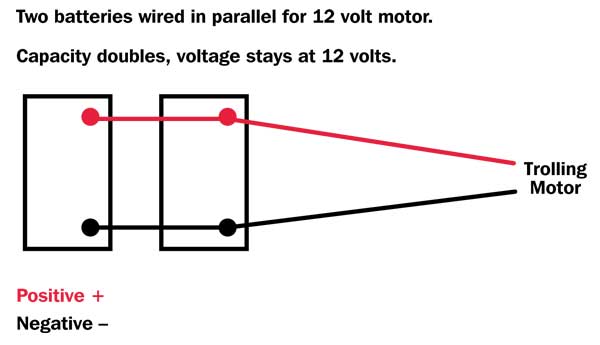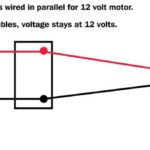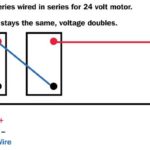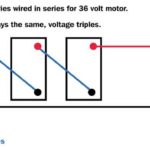
For wintertime crappie, try these deadly trolling techniques on any of several Louisiana lakes.
If you look at the top of a plain old flooded-cell, 12-volt marine battery, you see two widely separated metal posts and plastic caps lined up to cover six holes. The six holes let you replace water lost from each of the battery’s six cells during normal discharging and recharging. A 12-volt battery is really just a box containing six two-volt cells that are wired in series to produce 12 volts. The positive side of one cell is connected to the negative side of the next in a sort of daisy chain that adds the voltages of all the cells together.
The same thing happens when you wire two 12-volt batteries in series to power a 24-volt trolling motor. You connect the negative wire from the trolling motor to the negative terminal of one battery. Next, you connect a jumper wire from the positive terminal of that same battery to the negative terminal of the second battery. Now you have two batteries with wires connected to all but one terminal.
The motor’s positive power cable attaches to that last empty post, which happens to be the positive post of the second battery. Since the two batteries are daisy-chained together just like the separate cells in a single battery, we add their voltages together and get the 24 volts we need to run that trolling motor.
Three batteries are daisy-chained together in series exactly the same way to get 36 volts to power a 36-volt motor. The trolling motor’s negative power cable attaches to the negative post of the first battery. A jumper wire connects the positive post of that same battery to the negative post of the second battery. Another jumper wire is then installed between the positive post of the second battery and the negative post of the third.
Now there are three batteries with only one empty battery post, the positive post of the third battery. That’s where the positive power cable from the trolling motor connects to get 36 volts.
As far as the motors are concerned, they see either 24 volts provided by 12, two-volt cells wired in series or 36 volts provided by 18 two-volt cells wired in series.
Let’s say we have a 12-volt trolling motor and we want it to run two or three times as long as it runs on one battery. We can increase the running time by adding one or two more batteries to the motor’s original battery and wiring them together in parallel. We simply connect all the positive battery posts together and then connect all the negative posts together. No positive-to-negative post connections are made. As far as the trolling motor is concerned, it sees only one big battery with two or three times as many amps.
Simply put, wiring batteries in parallel increases their amp capacity while voltage stays the same, but wiring them in series increases voltage while amp capacity remains the same.
Wiring two identical batteries together in parallel doubles the total number of amps available, and an engineer once told me that many people mistakenly think that you also add the amps together when wiring two identical batteries together in series. That doesn’t happen.
He described the batteries as two big tanks holding amps that you could think of as “gallons.” Volts are the pressure pushing the amp gallons through the wires like water through pipes. Doubling the pressure from 12 to 24 volts moves the amps twice as fast through the pipes, so two batteries are emptied by 24 volts in about the same time as one battery is emptied by 12 volts.
On the other hand, if you have two identical tanks of amps piped together and you drain them at 12 volts, it takes twice as long to empty both tanks as it does to empty one.





